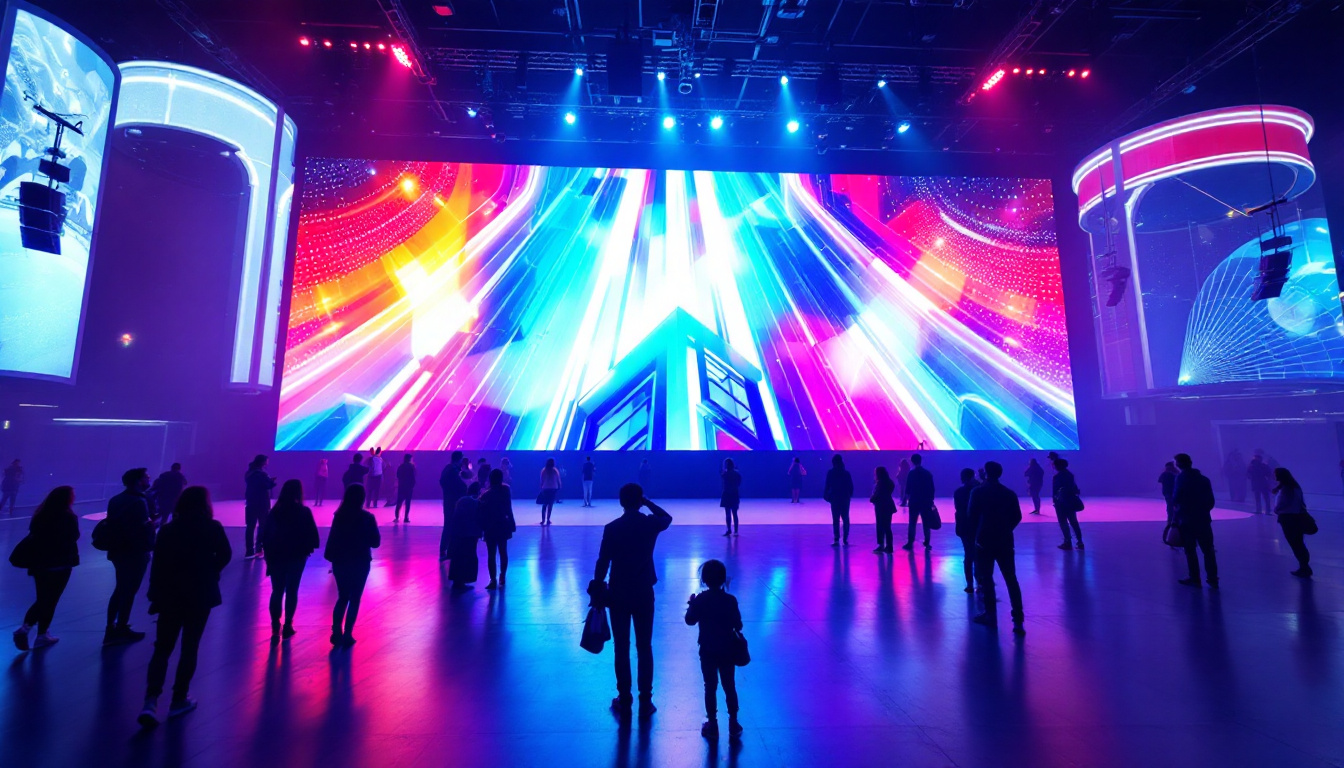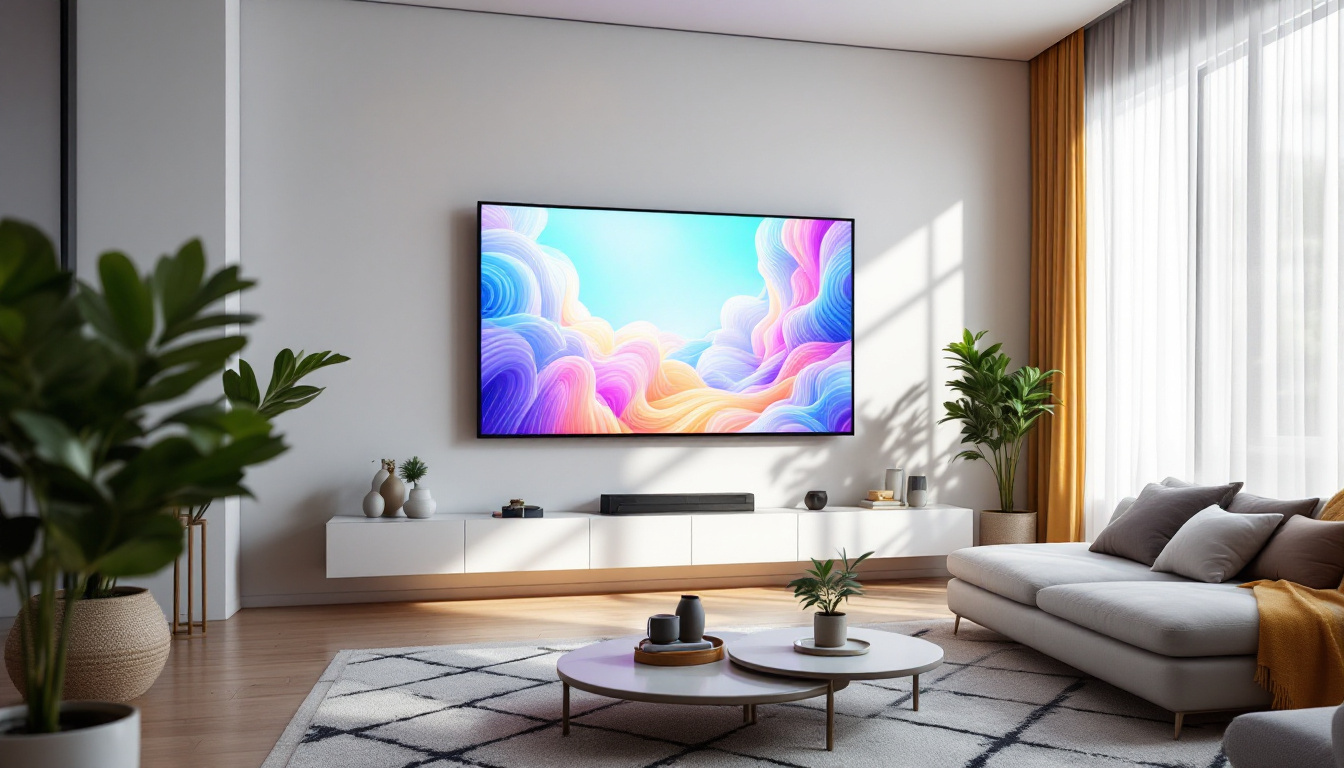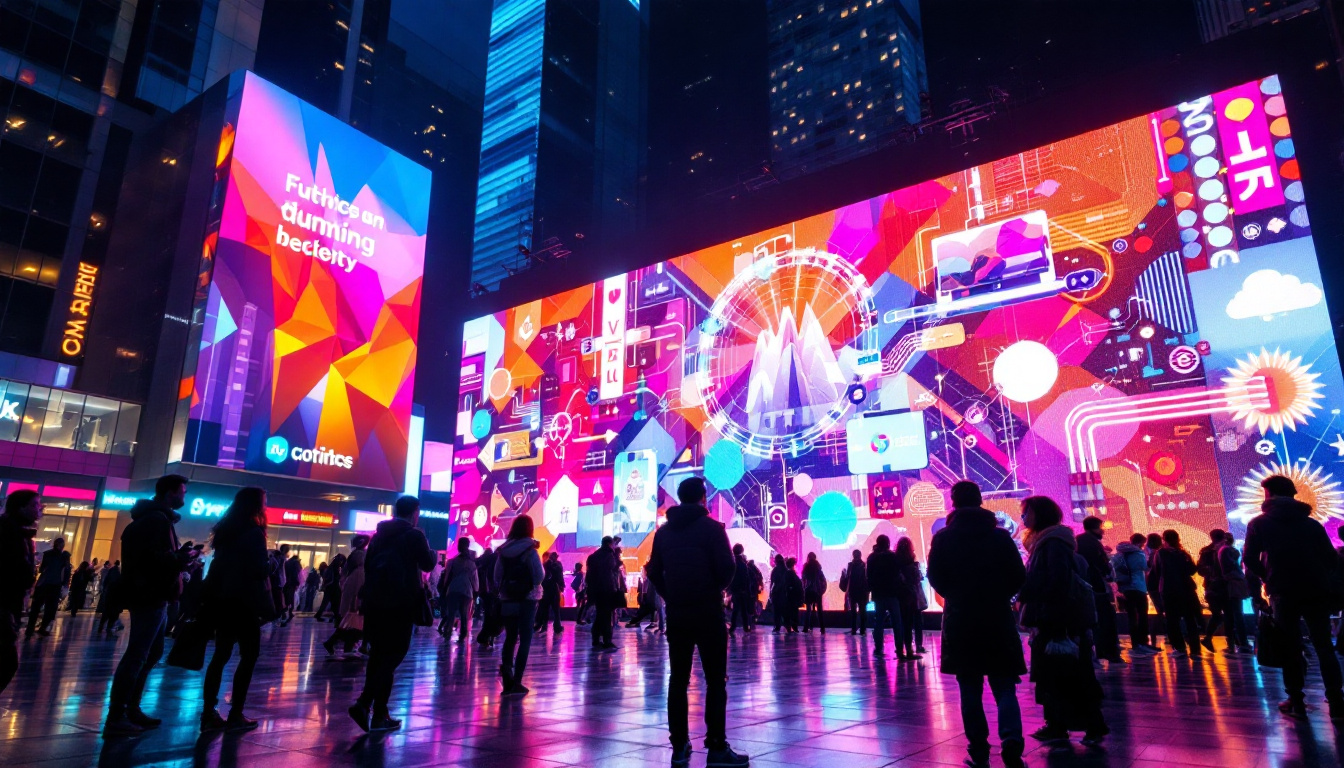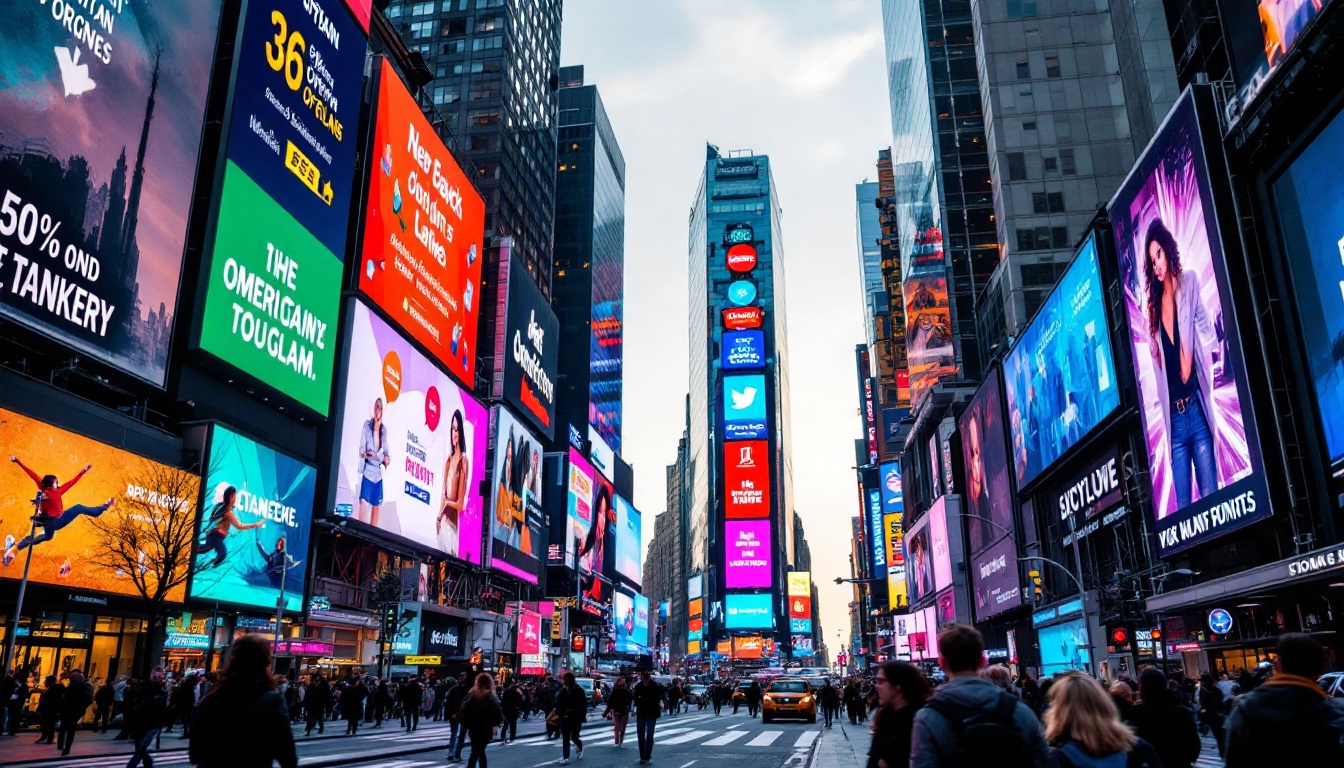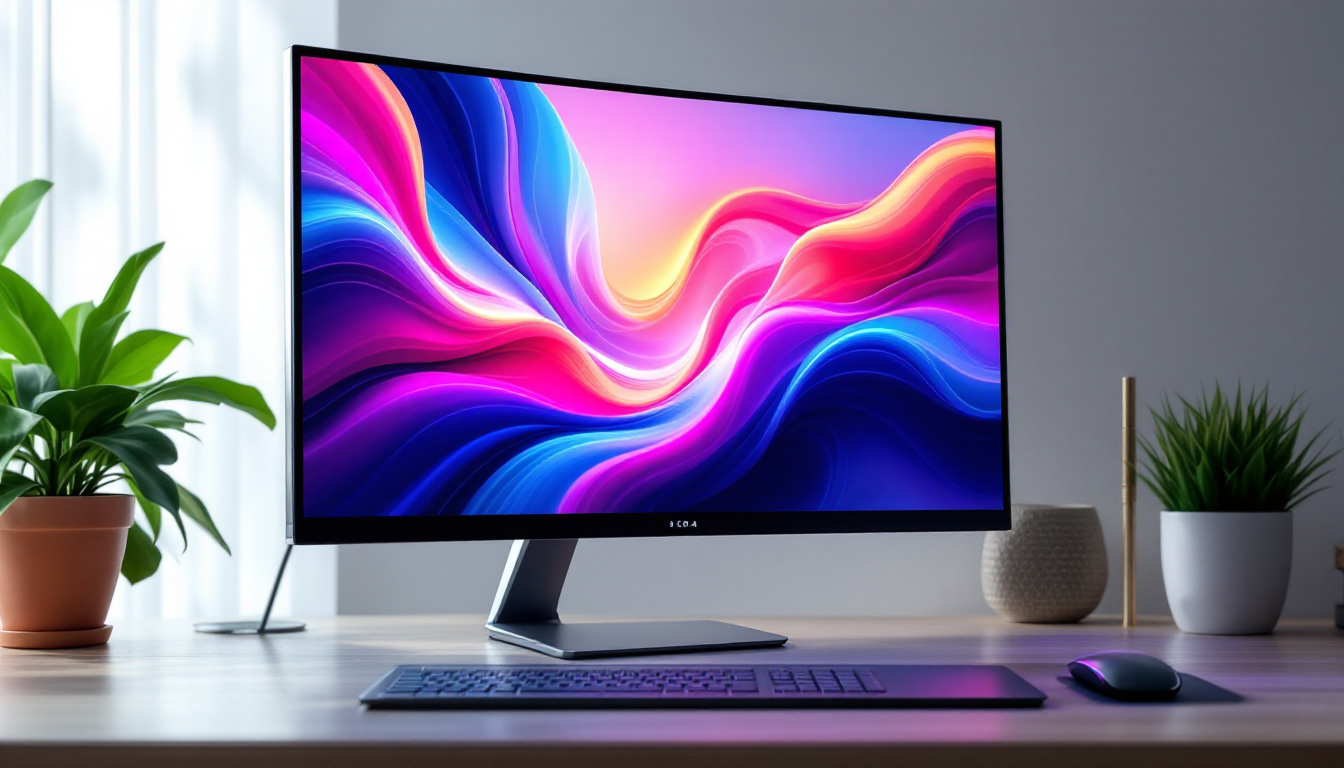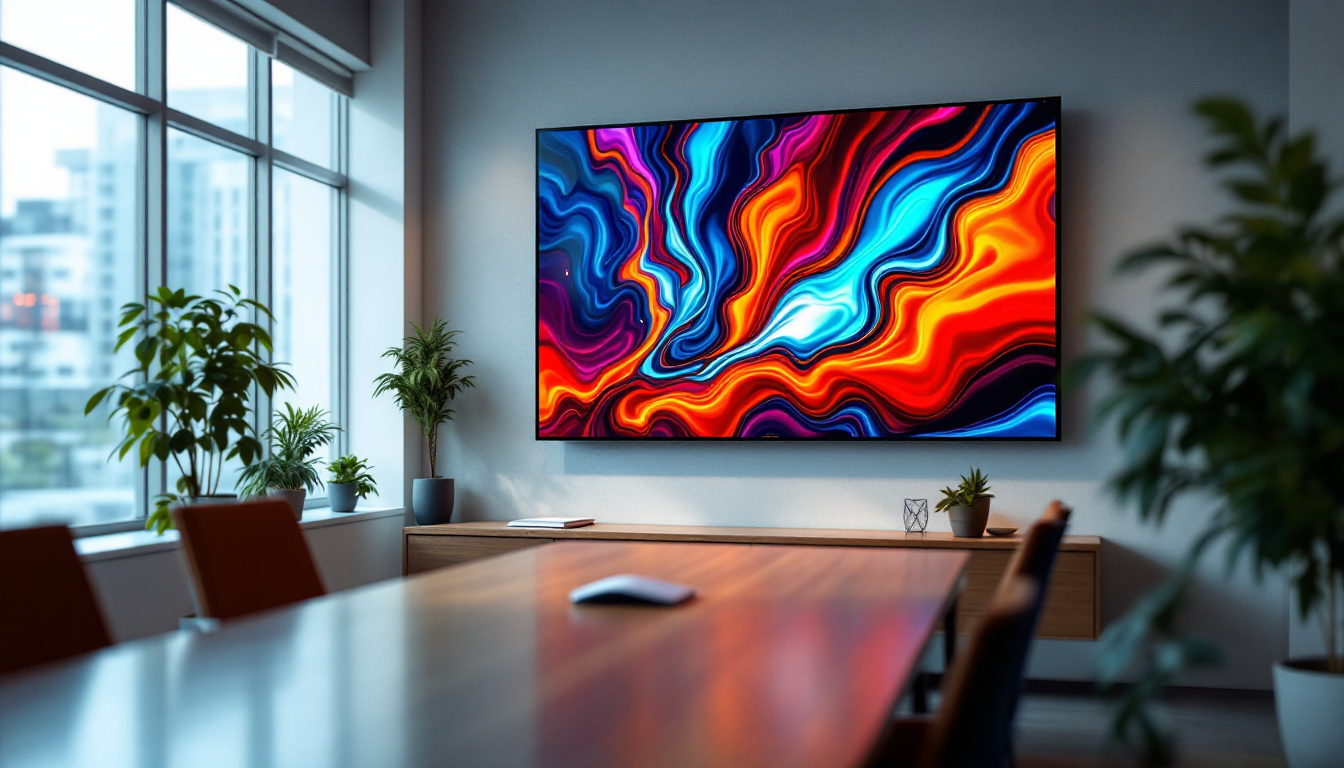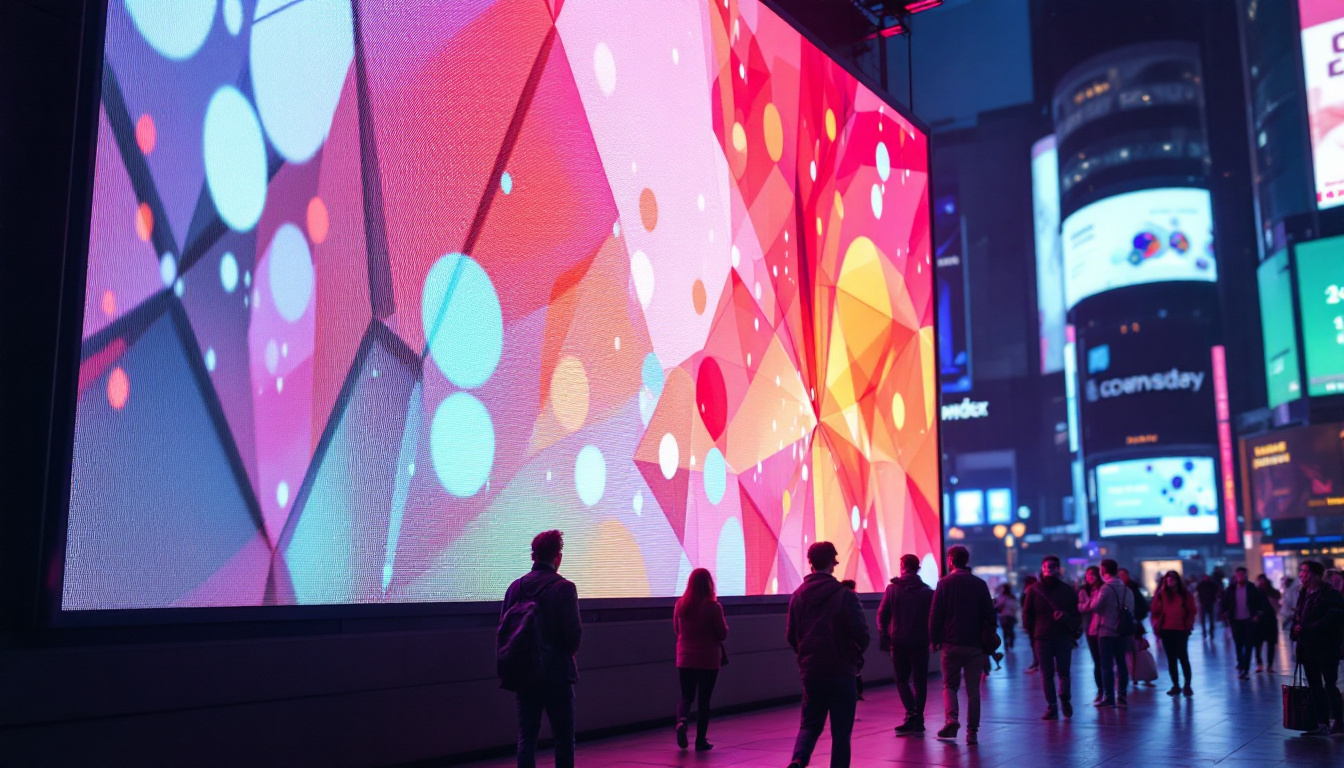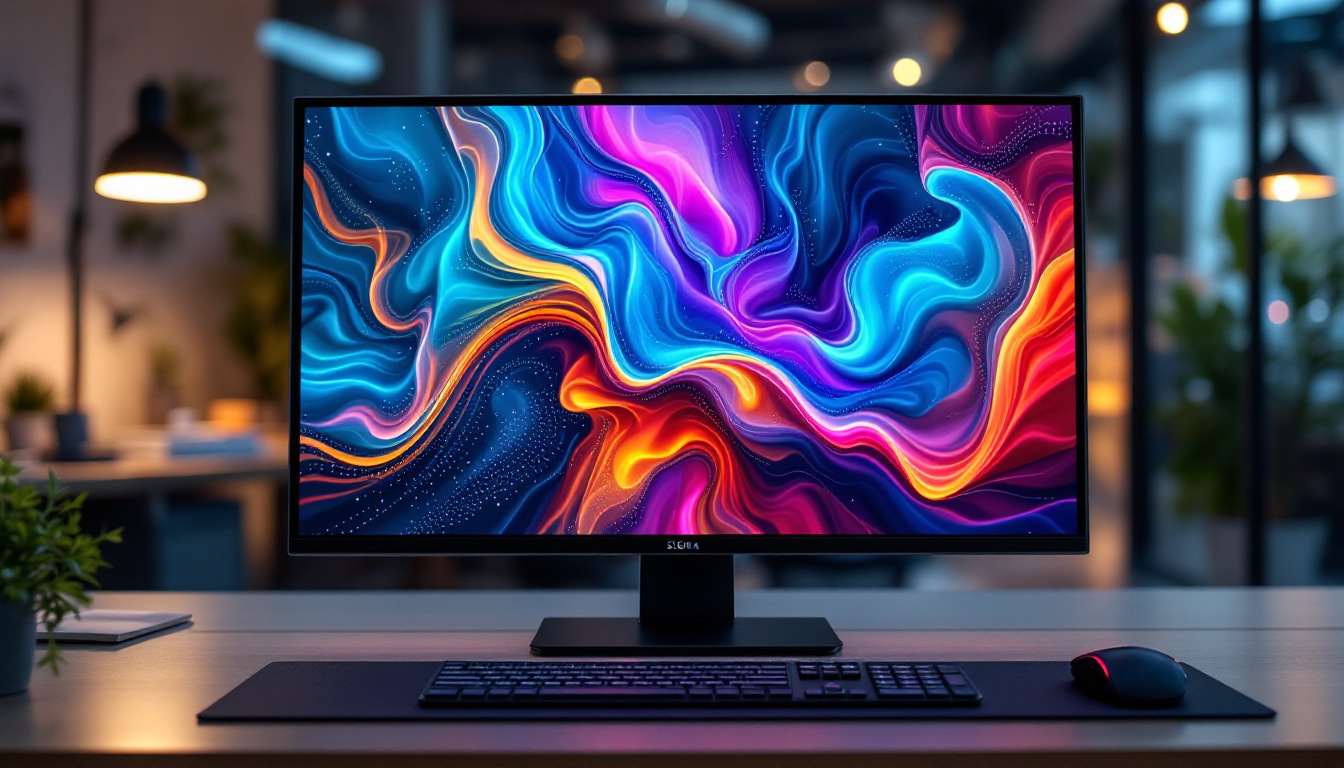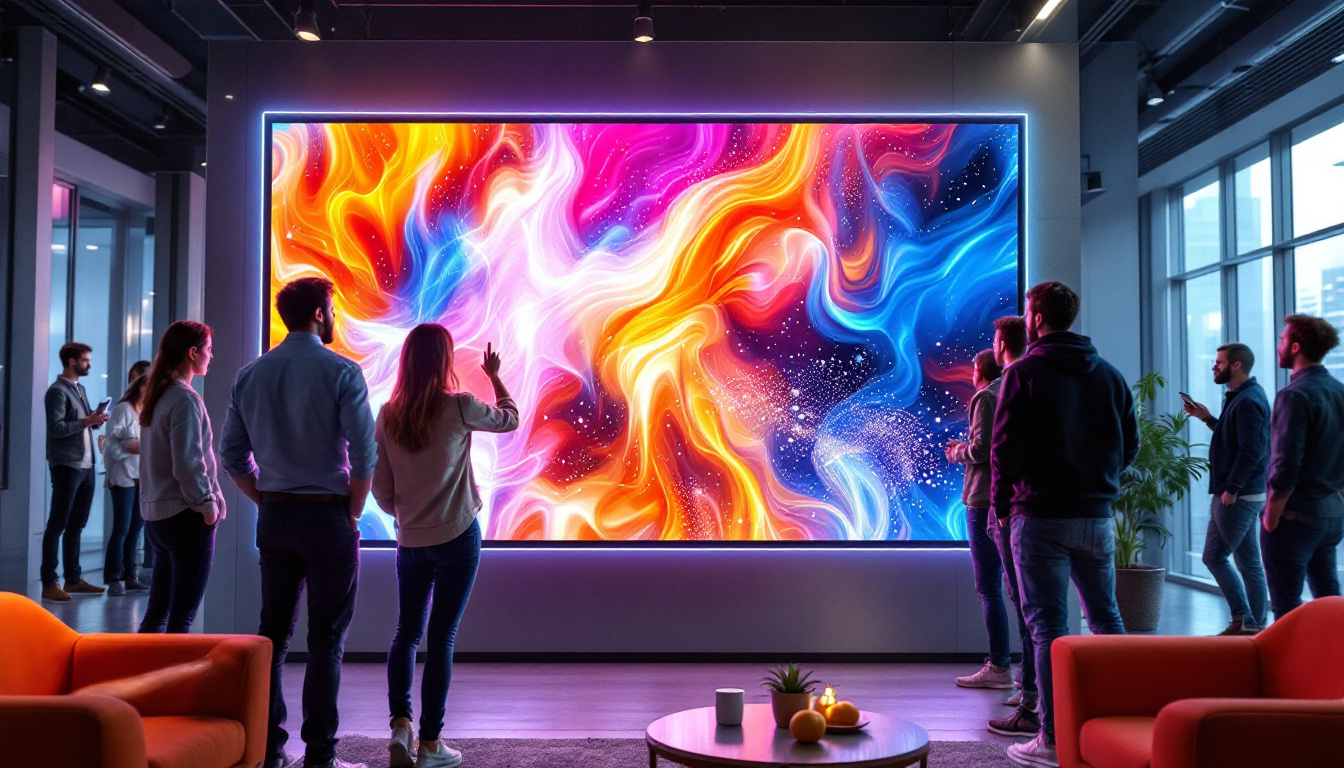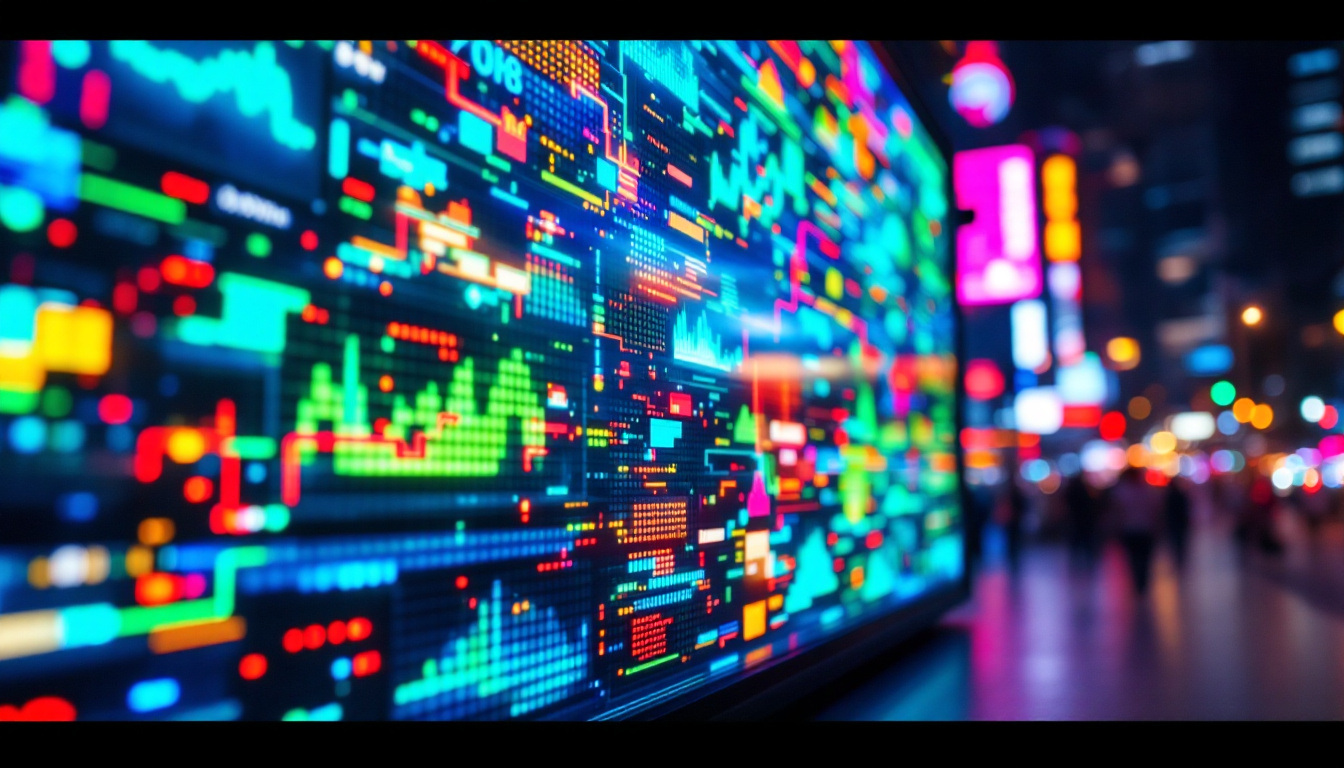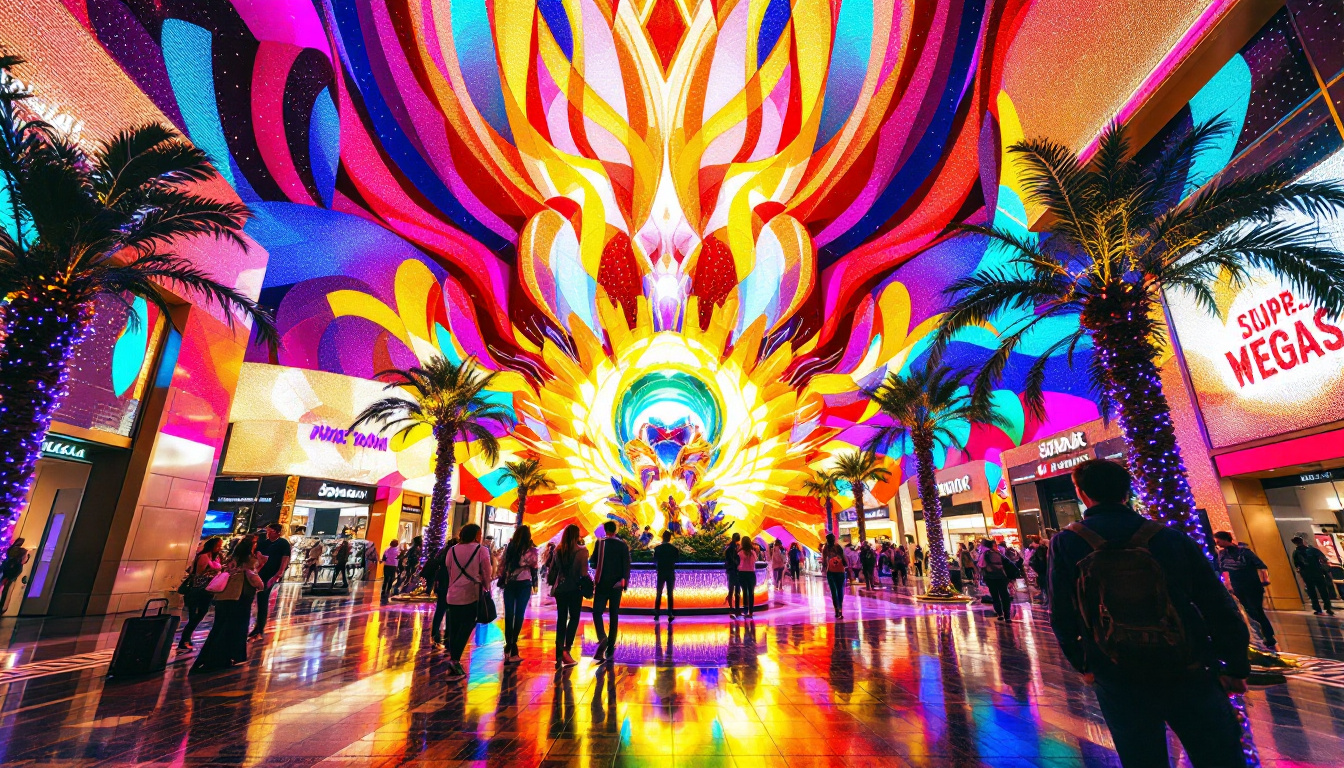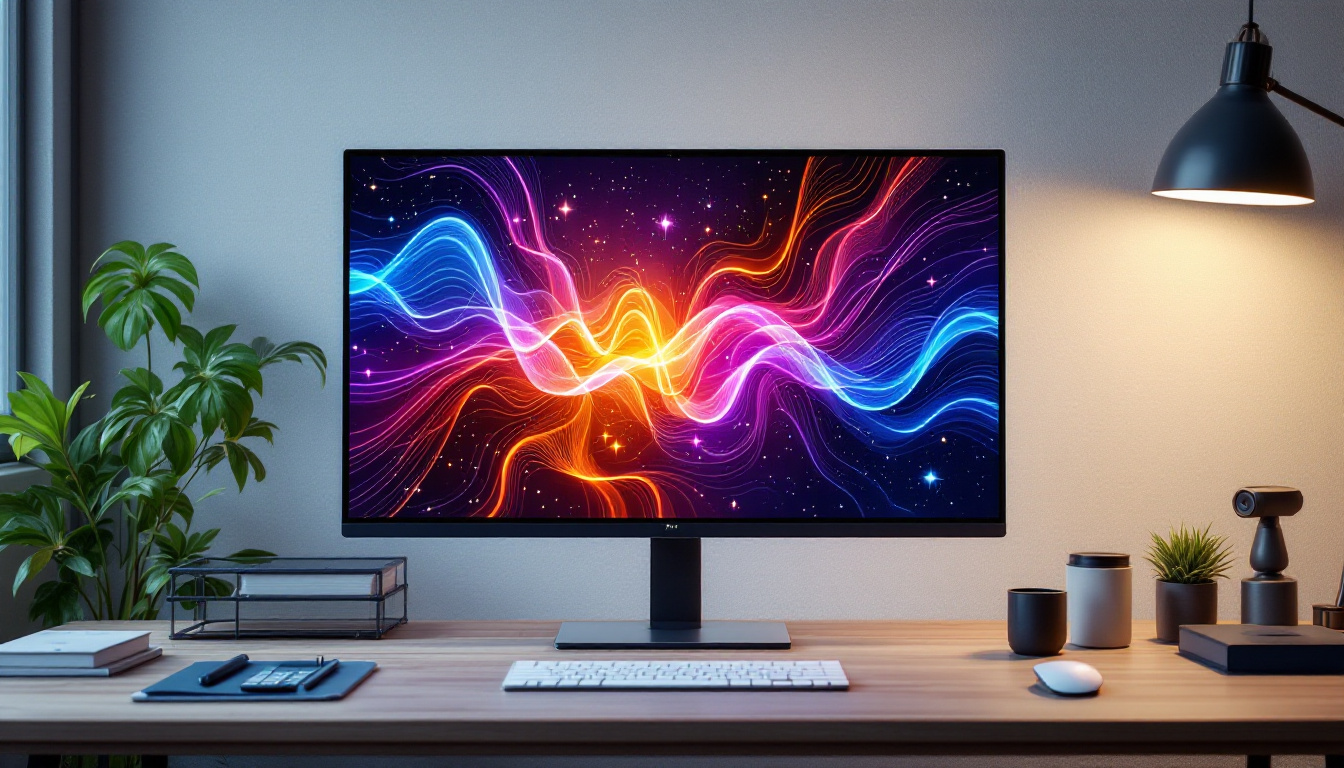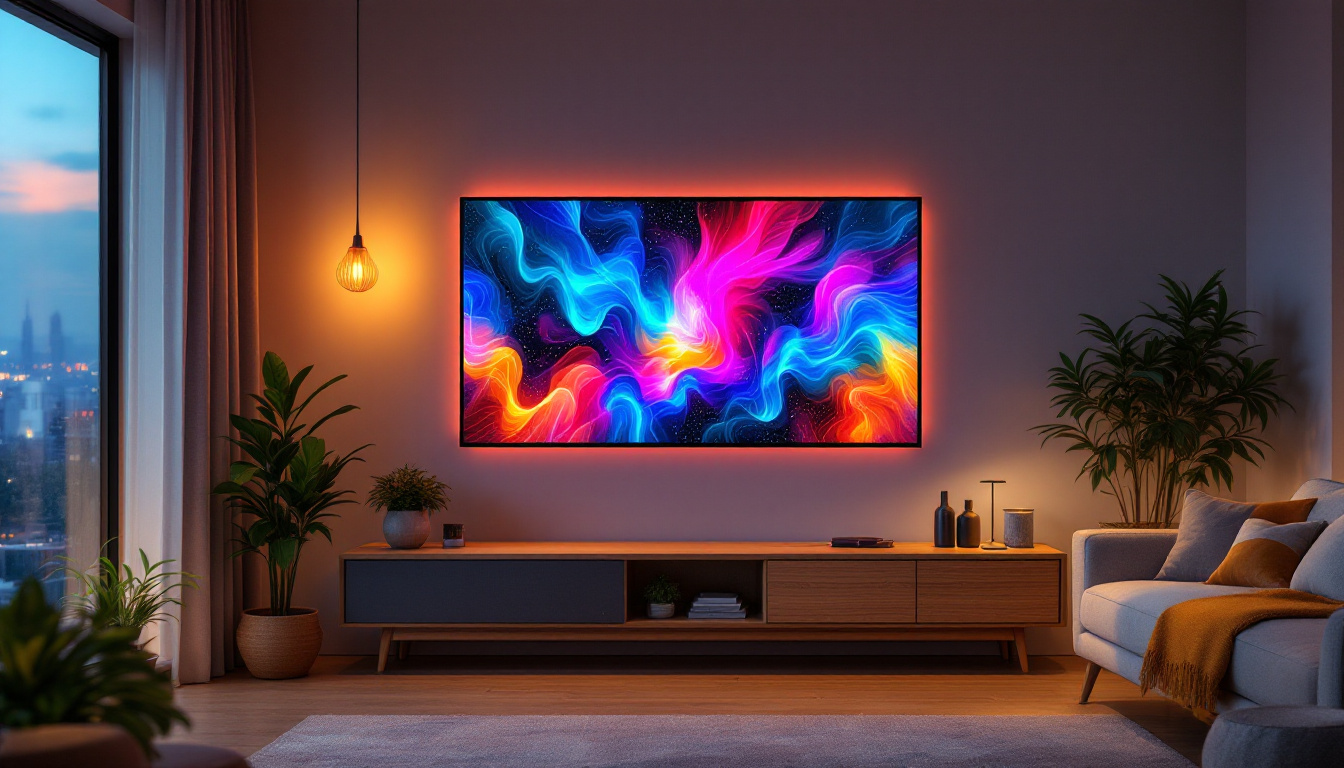Largest TV Screen In The World: LED Display Explained
In the age of technology, the quest for larger-than-life experiences has led to the creation of some astonishing innovations in display technology. Among these, the largest TV screen in the world stands out as a remarkable feat of engineering and design. This article delves into the specifics of this monumental display, exploring its technology, applications, and the impact it has on various sectors.
The Evolution of Display Technology
To understand the significance of the largest TV screen, it is essential to trace the evolution of display technology. From the early days of cathode-ray tubes (CRTs) to the modern era of LED and OLED displays, the journey has been nothing short of revolutionary.
From CRT to LCD
Initially, television screens were dominated by CRT technology, which, while effective, was bulky and limited in size. The introduction of LCD (Liquid Crystal Display) technology marked a turning point, allowing for thinner screens and better resolution. LCDs quickly became the standard for televisions, enabling manufacturers to produce larger screens without the cumbersome weight of CRTs. This transition not only transformed the aesthetics of home entertainment systems but also paved the way for the integration of televisions into various environments, from sleek living rooms to compact kitchens.
Moreover, the advancement of LCD technology also led to innovations in screen resolution, with the introduction of HD (High Definition) displays that offered a clearer and more vibrant picture. As consumers began to demand higher quality visuals, manufacturers responded by enhancing pixel density and refining color reproduction, resulting in a viewing experience that was previously unimaginable. This evolution set the stage for the competitive landscape of display technology, where the quest for superior image quality became paramount.
The Rise of LED Technology
LED (Light Emitting Diode) technology took the display industry by storm, offering improved brightness, energy efficiency, and color accuracy. LED screens can be made larger without compromising image quality, leading to the development of massive displays that can captivate audiences in various settings, from stadiums to concert halls. The versatility of LED technology also allowed for the creation of curved and flexible screens, providing immersive viewing experiences that adapt to the viewer’s perspective.
In addition to their impressive performance, LED displays have significantly reduced power consumption compared to their predecessors, making them a more environmentally friendly option. This shift toward energy efficiency has not only benefited consumers in terms of lower electricity bills but has also encouraged manufacturers to adopt sustainable practices in production. As a result, the display industry has seen a surge in innovations such as smart TVs that integrate advanced features like streaming services and voice control, further enhancing the way we interact with visual media.
The Largest TV Screen: An Overview
The title of the largest TV screen in the world is held by the LED display located at the Samsung Electronics headquarters in Seoul, South Korea. This impressive screen measures an astounding 1,000 square meters, making it a landmark in the world of visual technology.
Specifications and Features
The sheer size of this LED display is complemented by its advanced specifications. With a resolution that rivals smaller screens, it offers stunning clarity and vibrant colors. The display utilizes a modular design, allowing for flexibility in installation and maintenance.
Additionally, the screen is equipped with cutting-edge technology that enhances viewing angles and minimizes glare, ensuring that the image remains clear from various perspectives. This is particularly important in public spaces where large crowds gather to watch events or advertisements. The screen’s brightness is also noteworthy, capable of delivering vivid images even in direct sunlight, which is essential for outdoor visibility and engagement.
Technological Innovations
One of the standout features of this massive display is its integration with smart technology. The screen can be programmed to show a variety of content, from advertisements to live broadcasts, making it a versatile tool for communication and entertainment. Furthermore, its energy-efficient design aligns with contemporary sustainability goals, reducing the carbon footprint associated with large-scale displays.
In addition to its impressive functionality, the screen is designed to be user-friendly, allowing operators to easily switch content and manage displays remotely. This capability is particularly beneficial for events that require real-time updates, such as sports games or concerts, where dynamic content can keep audiences engaged. Moreover, the screen’s ability to integrate with social media platforms opens up new avenues for interactive marketing campaigns, enabling viewers to participate in live polls or contests, thereby enhancing their overall experience.
Applications of the Largest TV Screen
The applications of the largest TV screen extend beyond mere entertainment. Its size and capabilities make it an invaluable asset in various sectors, including advertising, sports, and entertainment.
Advertising and Marketing
In the realm of advertising, the massive LED display serves as a dynamic billboard that captures the attention of passersby. Brands can showcase their products in high definition, utilizing the screen’s vibrant colors and sharp images to create memorable advertisements. This has transformed how companies engage with consumers, providing an immersive experience that traditional billboards cannot match. Moreover, the ability to change content in real-time allows businesses to tailor their messages according to specific audiences or events, maximizing engagement and driving foot traffic. Interactive features, such as QR codes or touch-screen capabilities, further enhance consumer interaction, allowing potential customers to learn more about products or participate in promotional activities instantly.
Sports and Entertainment
For sports events, the large screen enhances the spectator experience. Fans can enjoy replays, live feeds, and highlights in stunning detail, making them feel more connected to the action on the field. Concerts and live performances also benefit from such displays, allowing artists to connect with their audience through visually captivating presentations. Additionally, these screens can be used to display real-time statistics and player information, enriching the viewer’s understanding of the game and keeping them engaged throughout the event. Beyond sports and concerts, large screens have found their place in festivals and public gatherings, where they serve as a communal focal point, bringing people together to share experiences and celebrate moments collectively. The integration of augmented reality elements can further elevate these events, creating a multi-dimensional experience that blurs the line between the physical and digital worlds.
The Impact on Society
The introduction of the largest TV screen has had a significant impact on society, influencing how people consume media and interact with their environment.
Changing Viewing Habits
As audiences become accustomed to larger displays, there is a shift in viewing habits. People are more inclined to seek out experiences that offer immersive visuals, leading to a demand for larger screens in homes, businesses, and public spaces. This trend has prompted manufacturers to innovate further, pushing the boundaries of what is possible in display technology.
Community Engagement
Moreover, large screens have become focal points for community engagement. They are often used to broadcast local events, sports games, and public announcements, fostering a sense of community among viewers. This communal viewing experience can enhance social interactions and create shared memories, contributing to the cultural fabric of a city.
Challenges and Considerations
Despite the numerous benefits of large LED displays, there are challenges and considerations that must be addressed. From installation logistics to maintenance and environmental concerns, these factors play a crucial role in the deployment of such technology.
Installation and Maintenance
Installing a massive LED display requires careful planning and execution. The structural integrity of the building or area where the screen will be mounted must be assessed to ensure it can support the weight and size of the display. Additionally, maintenance can be complex, requiring specialized technicians to address any issues that may arise.
Environmental Impact
While LED technology is generally more energy-efficient than its predecessors, the environmental impact of producing and disposing of large displays cannot be overlooked. Manufacturers are increasingly focusing on sustainable practices, such as using recyclable materials and reducing energy consumption during production. However, the industry must continue to innovate to minimize its ecological footprint.
The Future of Large Displays
The future of large displays looks promising, with advancements in technology paving the way for even more impressive innovations. As consumer demands evolve, manufacturers are exploring new possibilities.
Emerging Technologies
Technologies such as MicroLED and OLED are gaining traction, offering even greater resolution and color accuracy. These advancements could lead to displays that are not only larger but also more versatile in their applications. For instance, transparent displays are being developed that could revolutionize how information is presented in retail environments.
Integration with Augmented Reality
Another exciting avenue for large displays is their integration with augmented reality (AR). This technology allows for interactive experiences, where viewers can engage with the content on the screen in real-time. Imagine a sports game where fans can access player statistics or replays simply by pointing their smartphones at the display. The potential for interactivity could redefine how audiences engage with media.
Conclusion
The largest TV screen in the world is more than just a technological marvel; it represents the culmination of years of innovation and design in the display industry. Its impact on advertising, entertainment, and community engagement is profound, reshaping how people interact with visual media. As technology continues to evolve, the possibilities for large displays are limitless, promising an exciting future for both consumers and businesses alike.
As society moves forward, embracing these advancements will be crucial in leveraging the full potential of large LED displays. Whether it’s enhancing the viewing experience at sports events or creating immersive advertising campaigns, the largest TV screen is a testament to human ingenuity and the relentless pursuit of excellence in technology.
Discover the Future of Visual Experience with LumenMatrix
As you marvel at the advancements in LED display technology and the vast potential of the world’s largest TV screen, imagine the possibilities for your own space. LumenMatrix stands at the forefront of this innovation, offering a wide array of LED display solutions that bring your vision to life. From immersive Indoor LED Walls to dynamic Outdoor LED Displays, and from engaging LED Sports Displays to revolutionary Transparent LED Displays, LumenMatrix tailors to every need. Elevate your brand visibility and captivate your audience with our cutting-edge technology. Check out LumenMatrix LED Display Solutions today and join the visual revolution.

